People often ask if they can stain over paint. The answer to this question really depends on the type of paint that has been used and the stain itself. In this article, we will discuss the different types of paints and stains available and provide tips on how to achieve the best results. We will also answer some common questions about staining over paint. So, whether you are planning on painting your deck or furniture, read on for all the information you need to know!
Staining Over Paint Basics
Before we get into the nitty-gritty of things, let’s go over the basics of staining.
It works by adding pigment to the wood fibers, resulting in a durable and long-lasting finish. Unlike paint, which forms a layer on top of the wood, stain is absorbed into the wood itself. This makes it ideal for surfaces that will see a lot of wear and tear, such as floors and outdoor furniture.[1]How Wood Stains Work
Wood stains are translucent, meaning that they allow some of the natural color of the wood to show through. This is why a stain applied over paint may not look exactly the same as the stain alone. The paint will affect how much of the wood’s natural color is visible, and this can vary depending on the type of paint and the color of the stain.
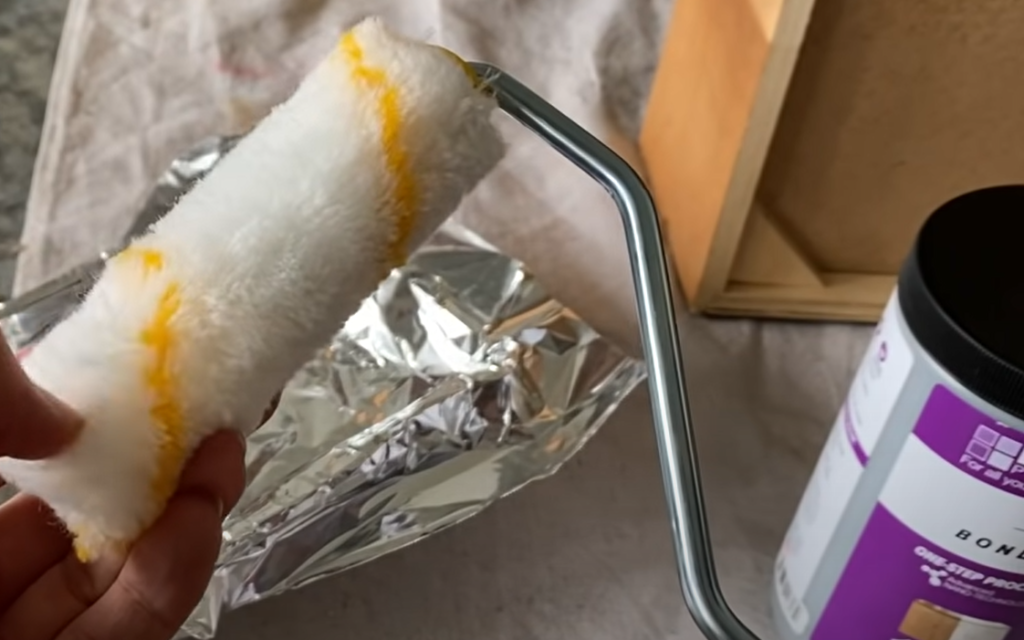
The other main component of a wood stain is pigment. Pigment is what gives a stain its color, and it can be either organic or inorganic. Organic pigments are made from plant extracts, while inorganic pigments are made from minerals. Some common inorganic pigments include iron oxide (red), titanium dioxide (white), and carbon black (black).
Most wood stains contain both pigment and dye. Dye is a colorant that is soluble in the vehicle, or liquid portion, of the stain. This means that it does not rely on the wood to absorb it like pigment does. Dye will give the stain its initial color, but it will eventually fade over time. Pigment, on the other hand, becomes part of the wood itself and will not fade.[2]
Types of Stains You Can Use Over Paint
Gel Stain
Gel stains are one of the most versatile types of stains because they can be used over a variety of surfaces, including paint. Gel stains have a thicker consistency than liquid stains, so they’re perfect for vertical surfaces like cabinets and doors. To apply a gel stain, simply wipe it on with a clean cloth and let it dry.[4]
Wood Stain
You can apply wood stain over paint, but it is important to follow a few steps first. Make sure the paint is fully cured and sand the surface lightly so that the stain can penetrate. Also, be sure to test the stain on a hidden area of the painted surface before applying it to the entire project. Otherwise, you run the risk of ruining your hard work![4]
Deck Stain
Deck stain is a type of paint specifically designed for outdoor use on decks, fences, and other wood surfaces. Unlike regular paint, deck stain is made to withstand the elements and protect the wood from UV rays, water damage, and mildew.
There are two types of deck stains: solid and semi-transparent. Solid deck stains provide the most coverage and protection but can also be the most difficult to apply evenly. Semi-transparent deck stains allow some of the wood’s natural grain to show through while still providing good protection against the elements.
Lacquer Stain
Lacquer stain is a type of paint that is specifically designed for use on wood surfaces. It is a very thin, transparent paint that penetrates into the grain of the wood and gives it a rich, deep color. Lacquer stains are available in a wide range of colors, from light to dark.
Types of Paint You Can Stain Over
Latex Paint
Latex paint is a type of water-based paint. It is made with acrylics, polyvinyls, and latexes. This type of paint is very versatile and can be used on a variety of surfaces, including wood, metal, and drywall. Latex paint is also very durable and easy to clean up.
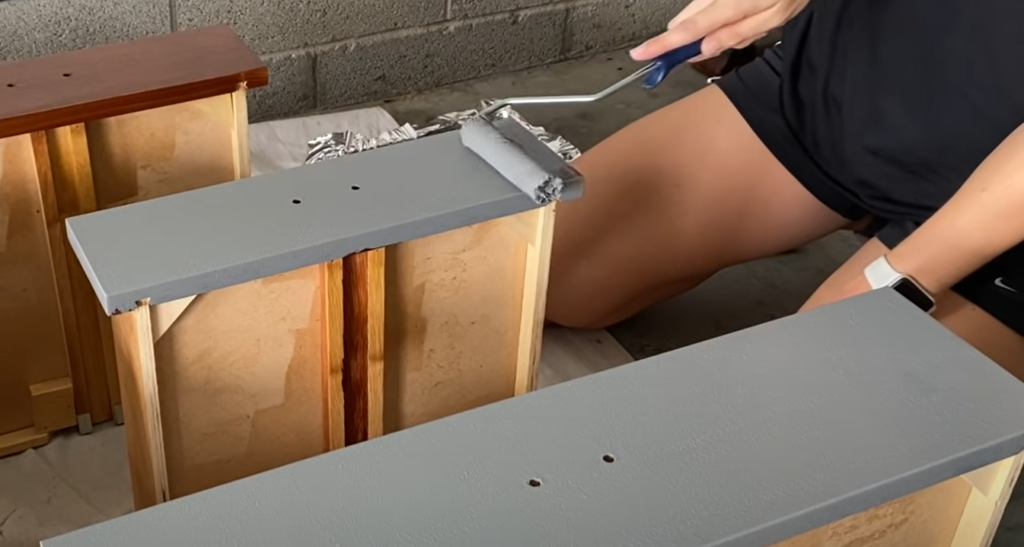
One downside of latex paint is that it can be difficult to remove if you ever want to change the color or design of your space. However, you can stain over latex paint if you use the right type of stain and follow the proper steps.
Chalk Paint
Chalk paint is a type of paint that can be used on a variety of surfaces. It’s known for its matte finish and chalky texture.
To achieve the desired effect, you’ll need to apply several coats of chalk paint. Once the final coat is dry, you can then start applying your stain.
Keep in mind that because chalk paint has a porous surface, it will absorb the stain differently than other types of paint. You may need to experiment with different techniques to get the perfect look for your project.
Acrylic Paint
Acrylic paint is a fast-drying paint made of pigment suspended in an acrylic polymer emulsion. Acrylic paints are water-soluble, but become water-resistant when dry.
Common questions about staining over paint concern whether the paint will adhere to the surface, and whether the color will be adversely affected by the stain. In most cases, you can apply stains over painted surfaces without issue. However, there are a few things to keep in mind before you begin your project.
Types of Paints You Can’t Stain Over
Polyurethane
Polyurethane is a type of clear coat that’s often applied over paint or stain to protect the surface from wear and tear. It’s also not a good candidate for staining because it doesn’t absorb stain well. In fact, attempting to stain over polyurethane can result in an uneven finish. If you want to add color to a surface that already has polyurethane, your best bet is to use a tinted polyurethane or a gel stain.
Enamel Paint
The main reason you can’t stain over enamel paint is that it’s not porous. Stains need to be absorbed into the surface in order to work properly, and enamel paint creates a non-porous barrier. This barrier will prevent any type of stain from penetrating the surface and will cause the stain to bead up on top of the paint.
In addition, even if you were able to get the stain to penetrate the surface, it would likely not adhere well to the enamel paint and would eventually peel or flake off. Enamel paint is also very tough and durable, so it’s not easy to sand down smooth enough for staining.
Spray Paint
The main reason you can’t stain over paint is that paint is a sealant. Once it dries, it forms a barrier that doesn’t allow stains to penetrate. This is why you need to remove all the paint before staining. Otherwise, the stain will just sit on top of the paint and won’t penetrate into the wood.
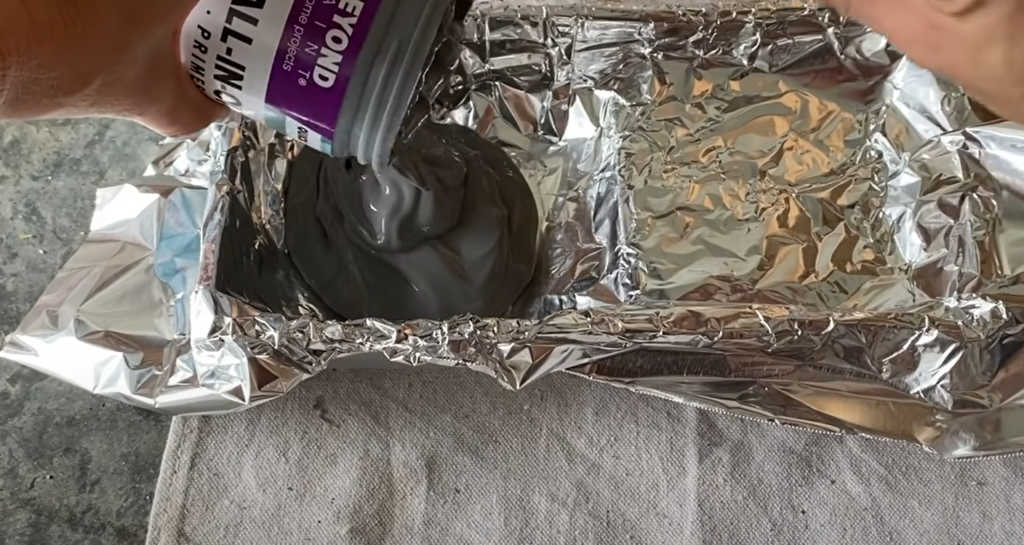
Stains are made to absorb into the wood grain so they can change the color or add a new color to the wood. But if there’s a layer of paint blocking the pores, the stain won’t be able to do its job properly. In some cases, you might be able to get away with lightly sanding the surface before.
Safety Considerations
Before we get started, let’s go over some safety considerations. When working with any kind of chemicals, it’s important to take the necessary precautions to protect yourself and your home. First, always read the labels on both your paint and your stain carefully.
Next, take the time to ventilate your workspace. This will help to ensure that you’re not inhaling any harmful fumes while you work. If possible, open windows and doors or use a fan to circulate fresh air throughout the room. Finally, be sure to wear gloves and other protective clothing when working with these products.[1]
Troubleshooting Tips
If you’re unsure whether your piece is suitable for staining, it’s always best to consult with a professional. In the meantime, here are some troubleshooting tips:
- If the paint is chipping, flaking, or peeling, it’s not a good candidate for staining. The new stain won’t adhere well and will likely peel off along with the old paint.
- If the paint is in good condition but you’re still not sure if staining is possible, try doing a small test area first. Apply a thin layer of stain to a inconspicuous spot and wait 24 hours to see how it looks and feels before proceeding.
How to Get a Faux Wood-Grain Look
If you want to add some warmth and character to a room without spending a lot of money, staining over paint is a great way to do it. You can use stain to create a faux wood-grain look on painted surfaces.
This will help the stain adhere better. Once you’ve sanded, wipe away any dust with a damp cloth. Then, apply your chosen stain with a brush or rag in long, even strokes. Let the stain dry completely before adding a topcoat of polyurethane for extra protection.How to Achieve a Smooth Look and Feel
To achieve a smooth look and feel on your newly stained surface, it’s important to follow these tips:
- Use sandpaper to lightly sand the area before staining. This will help create a smooth surface for the stain to adhere to.
- Apply the stain evenly and with consistent brushstrokes. Avoid over-applying the stain, as this can lead to an uneven finish.
- Allow the stain to dry completely before applying a topcoat or varnish. This will ensure that your finish is long lasting and looks its best.
Stain Over Paint: Tips for Success
Staining over paint is possible, but it’s not as simple as applying a new coat of paint. There are a few things you need to do to ensure that your staining project is successful. Here are some tips:
- Start with a clean surface. Make sure that the surface you’re working on is free of dirt, dust, and other debris. Otherwise, the stain will not adhere properly.
- Test the stain in an inconspicuous area first. This will help you determine whether the stain is compatible with the type of paint you’re using.
- Apply the stain evenly. Use a brush or rag to apply the stain evenly across the surface. Avoid overloads and puddles, which can cause the stain to run.
- Allow the stain to dry completely before applying a topcoat. Once the stain is dry, you can apply a clear sealer or varnish to protect it from wear and tear.
What’s the Difference Between Paint and Stain?
Before we get into whether you can stain over paint, let’s quickly go over the basics of each. That way, you’ll have a better understanding of how they work and why one might be better suited for your project than the other.
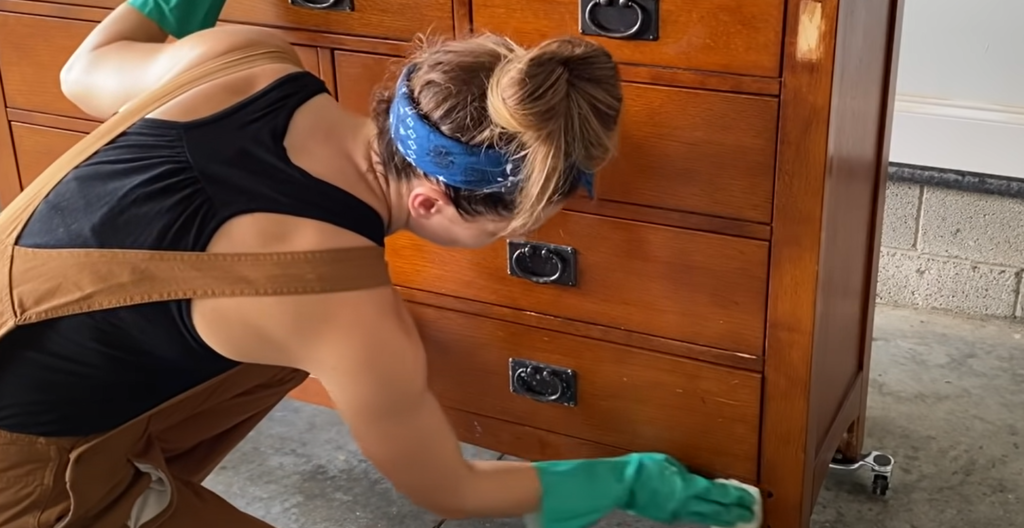
Paint is made up of three main ingredients: pigment (which provides color), binder (which helps the pigment adhere to surfaces), and solvent (which helps keep the paint in liquid form until it dries). Once applied and dried, paint forms a durable film on top of surfaces that protects them from moisture, wear, and tear.
Stain, on the other hand, consists of a colored pigment suspended in a carrier solution. Unlike paint, stain penetrates surfaces to color them from within. This means that it won’t form a film on top of the surface, which can be beneficial if you want the natural grain of the wood to show through.[2]
Ways To Stain Over Paint
Staining Over Paint the Rustic Way
The quickest way to add some character to any room is by giving the walls a little bit of rustic charm. And one of the easiest ways to do that is by staining over paint.
This method works best with older homes that have already been painted several times. The key is to choose the right type of paint stripper and to follow the directions carefully. Once you’ve removed all the paint, you can apply your stain of choice directly to the wood.
Staining Over Paint the Technical Way.
Now that we know it’s possible to stain over paint, let’s talk about how to do it the right way. First, you’ll need to sand down the painted surface until it’s smooth. This will allow the stain to penetrate evenly into the wood. Next, apply a thin layer of stain using a brush or rag. Wipe off any excess stain and allow it to dry completely before applying a clear topcoat.
With these simple steps, you can successfully add a new layer of color to your furniture without having to strip away the old paint job first! Just be sure to take your time and work in small sections so that you don’t miss any spots.[2]
Why Use Stain Over Paint?
Refinishing Painted Furniture
There are a few reasons you might want to use stain over paint. Maybe you have some old furniture that’s been painted and you want to give it a new look. Or maybe you’re trying to match the color of an existing piece of wood furniture. Either way, staining over paint can give your furniture a whole new look.
Applying stain over paint is also a great way to refinish furniture.
And if you’re not sure how to refinish furniture, staining over paint is a great place to start.[3]Adding Depth to Carved Details
If you want to add more depth and variation to any carved details in your piece, staining is a great way to do that! You can apply a dark stain over the entire piece, and then use a brush or rag to wipe away the excess from the raised areas. This will give those areas more definition and make them stand out more.

Just be sure to test your stain on a small area first, especially if you are working with an older piece of furniture. The paint might have gotten brittle over time and could flake off when you’re trying to remove the excess stain. If that happens, it’s best to sand down the area until it’s smooth again and start over with a fresh coat of paint.[3]
Can You Stain Over Paint Without Sanding?
The short answer is no, you can’t stain over paint without sanding.
But there’s a little more to it than that. In some cases, you might be able to get away with a light sanding or deglosser, but in most cases, you’ll need to remove the paint completely before applying a new coat of stain.
FAQ
Can stain be applied over latex paint?
Yes, you can apply stain over latex paint as long as the paint is in good condition and firmly adhered to the surface. If the paint is chipping or peeling, it’s best to remove it before applying stain.
To ensure good adhesion of the stain, be sure to roughen up the surface of the paint with sandpaper first. Once you’ve done that, wipe away any dust with a tack cloth before proceeding with staining.
Can I gel stains over paint?
No, you should not use gel stains over paint. Gel stains are meant to be used on bare wood and will not adhere well to painted surfaces. If you want to add a stain to your project, opt for a water-based stain instead.
Water-based stains will work well on both bare wood and painted surfaces. However, keep in mind that the color of the stain may appear different on each type of surface. For best results, test the stain on a small area before applying it to your project.
What is the difference between gel stain and regular stain?
The main difference between gel stain and regular stain is the consistency. Gel stain is much thicker than regular stain, which makes it ideal for vertical surfaces. It is also less likely to drip and run when applied.
Regular stain is thinner and more liquid-like in consistency, making it better suited for horizontal surfaces. It can be difficult to control on vertical surfaces and has a tendency to drip and run.
Both types of stains will give your furniture or cabinets a beautiful finish, but you may want to use one over the other depending on the project you are working on.
How do I paint wood to make it look stained?
To make your wood look like it’s been stained, you’ll want to first sand down the surface. Once the surface is smooth, apply a coat of primer and let it dry completely. Once the primer is dry, you can then apply your desired stain color. Always test your stain in an inconspicuous area before applying it to the entire piece. When staining, be sure to work in small sections and wipe away any excess stain with a clean cloth. Let the stain dry completely before adding a topcoat of sealer or varnish.
What does stain over paint look like?
There are a few different ways that you can achieve a stained look over paint, and the method you choose will largely depend on the paint color and finish that you’re starting with. If you want a more opaque, even coverage of stain, you can apply it directly over the paint with a brush or rag. This will give you more control over the final look, but it can be tricky to get an even coat this way.
Is it better to stain or paint wood?
It’s a common question with no easy answer. It depends on several factors, including the type of wood, the current finish, and your personal preference.
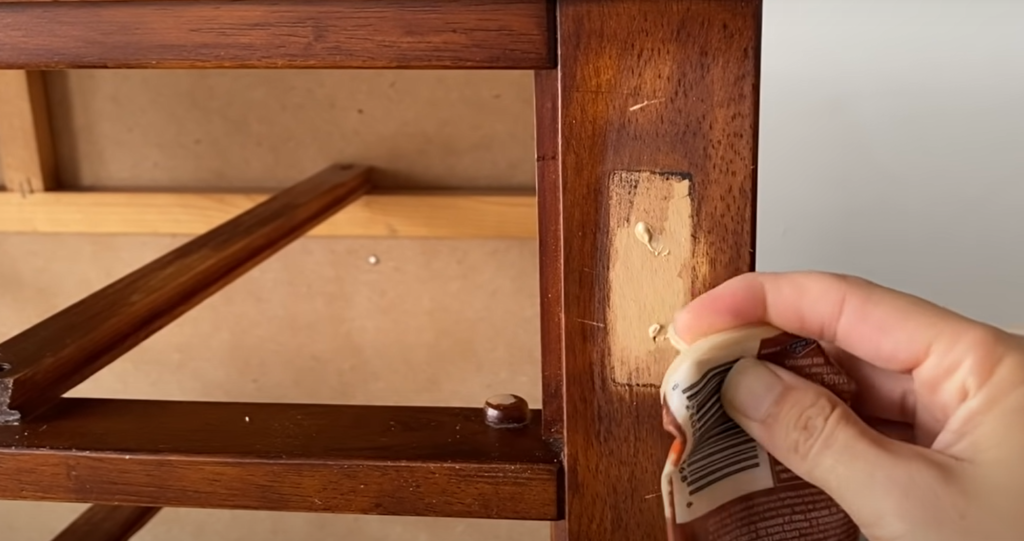
If you’re looking for a quick answer, here it is: You can stain over paint, but it’s not always the best idea. It really depends on the condition of the paint and the type of wood you’re working with.
Do they make paint that looks like stains?
If you’re looking for a paint that has the same appearance as a stain, there are plenty of options available. You can find paints that mimic the look of wood stains, leather stains, and even metal stains. These paints are generally more expensive than traditional paints, but they can give your home a unique look.
Useful Video: You can stain over paint?! || How to stain over painted wood furniture
Conclusion
Whether you’re looking to add some color to your home or simply change the appearance of your walls, staining over paint is a great option. With so many colors and finishes available, you can find the perfect look for your home. Just be sure to follow the manufacturer’s instructions and take your time to achieve the best results. Thanks for reading! We hope this article was helpful. If you have any questions, feel free to leave a comment below and we’ll do our best to answer them.
References:
- https://www.thespruce.com/how-to-stain-over-paint-4587769#
- https://www.thatsweettealife.com/can-you-stain-over-paint/
- https://www.homebeautifully.com/2020/02/26/stain-over-paint/
- https://www.diygeeks.com/stain-over-paint/



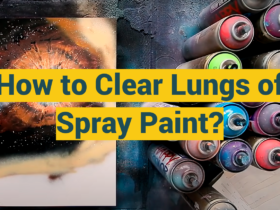

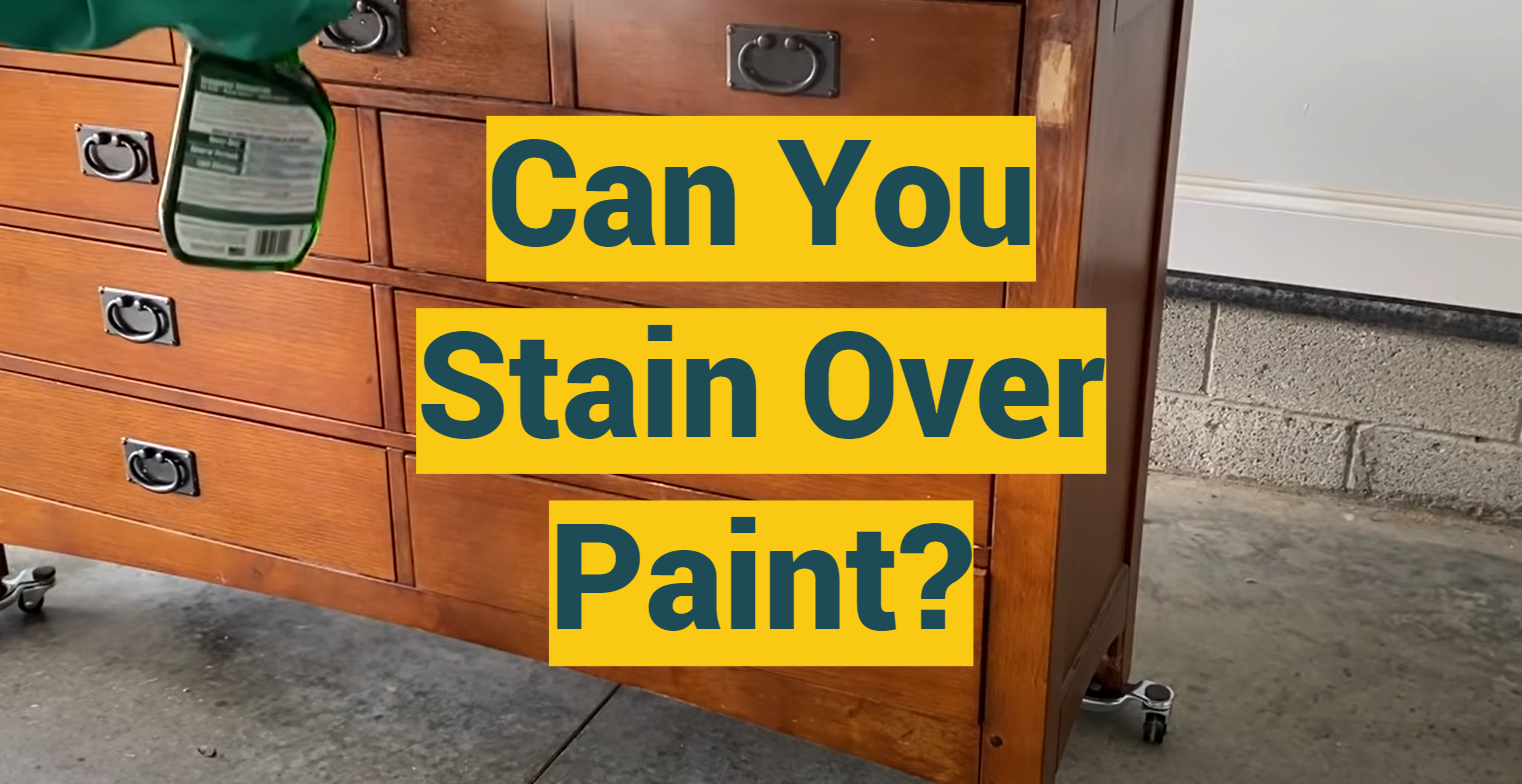




Leave a Review